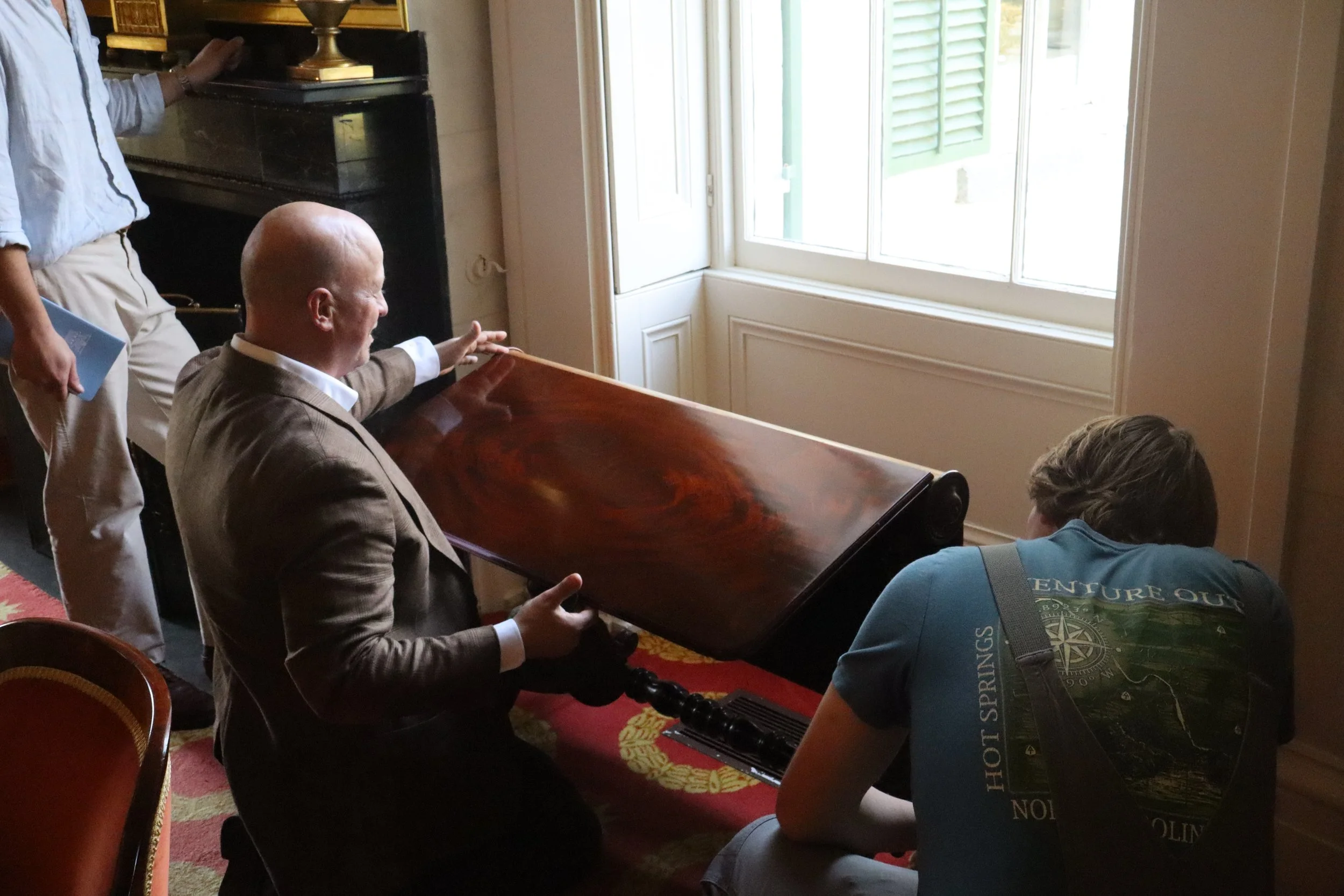Preservation Begins with Research
Author: Jeff Klee, PhD
Securing the past and honoring the future
The serious study of architecture is at the heart of the Classical American Homes Preservation Trust. Each of our buildings is worthy of the highest level of care and to look after them properly, we must understand them fully.
At the most basic level, this research requires being able to distinguish original material from later replacements, to ensure that the most precious, most fragile, and most irreplaceable parts of our buildings are treated appropriately. Much of our work, therefore, involves the detailed physical investigation of our sites, recording them in reports and photographs and drawings that document their original form and their evolution and using that information to set priorities for preservation.
Caring for our buildings is our first obligation. Our second is sharing them with the public. This requires a deeper level of knowledge that comes from sustained scholarship. That work proceeds along three fronts: identifying original owners and occupants of our sites; identifying their builders and designers; and determining how our buildings were used on a daily basis.
Identifying historic owners, for houses like ours, is relatively simple because the information is preserved in official records like deeds and wills. Finding historic occupants is a different story—some leave more of a paper trail than others. The Roper family members, or the Mannings at Millford, can be identified in deeds, wills, letters, and other documents, including the federal census. But their enslaved domestic staff is harder to identify. The 1850 and 1860 slave censuses identify individuals by age and gender and their place of work but not by name. More work can be done, such as combing through letters and baptismal records, to restore names to the enslaved members of the households at Ayr Mount, Millford, and the Roper House.
Finding historic designers and builders is also difficult but houses as grand as those owned by the Classical American Homes Preservation Trust often leave a trace in the documentary record. For Millford, there is extensive documentation of the construction process, identifying the builder as Nathaniel Potter and suggesting, even, that the plans were prepared by Russell Warren, an architect and a native of Rhode Island, like Potter. The builders of Ayr Mount are identified by inference, through letters and their involvement in similar building projects in Orange County. And while the original builders of Edgewater remain as yet unknown, the improvements to the house and grounds in the 1850s were undertaken by A.J. Davis. And Andrew Jackson Downing had known Robert Donaldson, the then-owner of Edgewater, for years, even dedicating his Cottage Residences to him in 1842, praising his good taste as an “Arbiter elegantarium.” Further research will provide further insights into the web of personal and professional relationships between the property owners and the designers and builders whose skill made them objects of admiration two centuries later.
The third, and most challenging, avenue of investigation concerns use. How these houses were occupied when they were first built might seem to be a simple matter, with little to work out—bedrooms upstairs, public rooms down, with a kitchen somewhere nearby. But look more closely and the questions start to mount. Of the four principal public rooms at the Roper House, which were the most important? And what was the role of the two little rooms at the front and back of the passage? How were the public rooms served? How did domestic servants, enslaved as well as free, go about their work routine? Why is there no service stair at Millford, or the Roper House? Some of these questions can be answered through looking closely at the building and considering the relationship of finishes, the location of doors, and the position of spaces for cooking and laundry. But others require broader investigation into the practice of social life and servitude in the past, looking at sources like contemporary diaries, probate inventories, and even contemporary fiction for a glimpse into how houses like ours were likely used when they were new.
In time, as we continue to pursue these multiple avenues of research, our understanding of our buildings, and of American architecture more generally, will deepen. Stay tuned.









